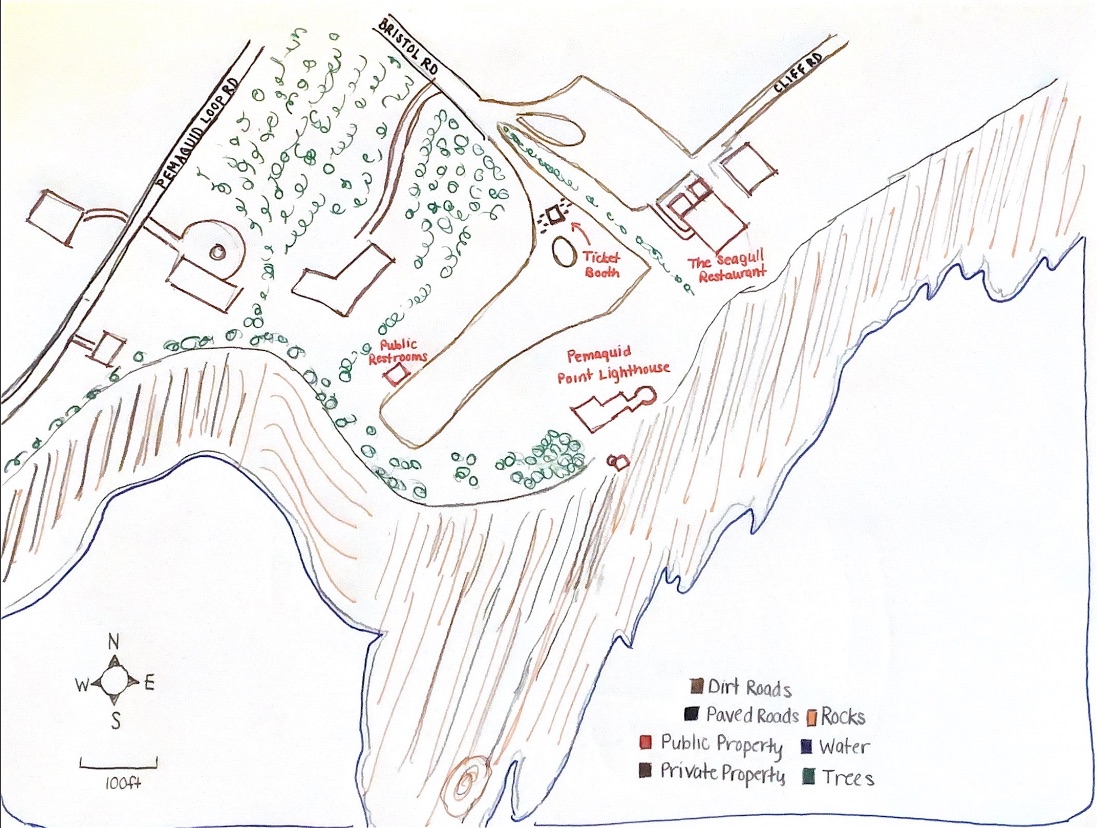
The map above is of a lighthouse that is near my house. The lighthouse, which is formally named Pemaquid Point Lighthouse, it is a historic site at the end of Pemaquid peninsula, on which my house is located. Although the building consists of a tower, a tourist shop, and the lighthouse keeper residence, the architecture of the design is lack-luster. Tourist come to see our lighthouse, the lighthouse on the Maine quarter, but it is the rocks, past the lighthouse, going right into the water that the locals come to the lighthouse for. The rocks are the compelling part.
Relating the readings to the lighthouse was difficult, I found myself having to stretch readings for them to apply to the lighthouse. I went back through the supplemental readings to find more sources. I think what I notice now, is it is hard to categorize such a rural space other than just labeling it as rural, or remote. Specifically, here, with the lighthouse being at the end of the peninsula, a considerable drive from the nearest town, it is very remote. I consider the nearby town to be big, but realistically, it is all very rural. Regardless, I was able to apply the readings about urban areas to my rural lighthouse. In Jen Gehl’s, “Three Types of Outdoor Activities”, I appreciated reading her thoughts on the differences between necessary activities verses optional activities verses social activities. Analyzing the environment it takes to have a successful outdoor space that people congregate in optionally is difficult, however, she was able to precisely capture this argument. It was unusual how both optional and social applied to the lighthouse. Locals treat the lighthouse as an optional activity (for the most part), while tourist purely go as a social activity. Locals go when they “wish to do so and when time and space make it possible”, while tourist plan a day trip to go sightseeing.
I was able to connect my appreciation for the rocks to not only Gehl’s work, but also the movie we were suggested to watch, “The Social Life of Small Urban Spaces” by William Whyte. The scenes regarding chair placement reminded me of how people address the rocks. It is not possible to individually pick up the rocks and change the angle or position since it’s one connected piece surrounding the peninsula, but because of how weathered the rocks are and the natural formations, it is possible for anyone to find “their spot” on the rocks. Walking farther away from the lighthouse, the more personal it can feel that no one has ever found that spot.
As can be seen in the map, the lighthouse property occupies a large area of the tip of the peninsula. There is a private residential area of mansions that can be seen on the map, in the upper left corner, but on the property of the lighthouse, the mansions blend in with the background and do not obstruct or ruin any views. There is a restaurant to the right of the lighthouse, or, there was a restaurant, the building actually just burned down two weeks ago. Regardless, whether the restaurant is there or not, an awful metal fence separates the properties. To eliminate the ugly look of the fence, bushes were planted, but it is still obvious that the harsh boundary exists. Below the lighthouse, before the rocks, there is a cluster of trees. It is here that there are picnic tables for people to gather, experiencing the view, from a safe distance.
The lighthouse is at the edge of the neighborhood. Due to the natural component of the space, it is on the outskirts of not only the neighborhood, but quite far from any real town center. It is the remoteness of the lighthouse and the rocks that makes this location so popular. I would not say that the lighthouse is perse difficult to get to, but you must drive an additional 30 minutes from the closest town to get to it.
